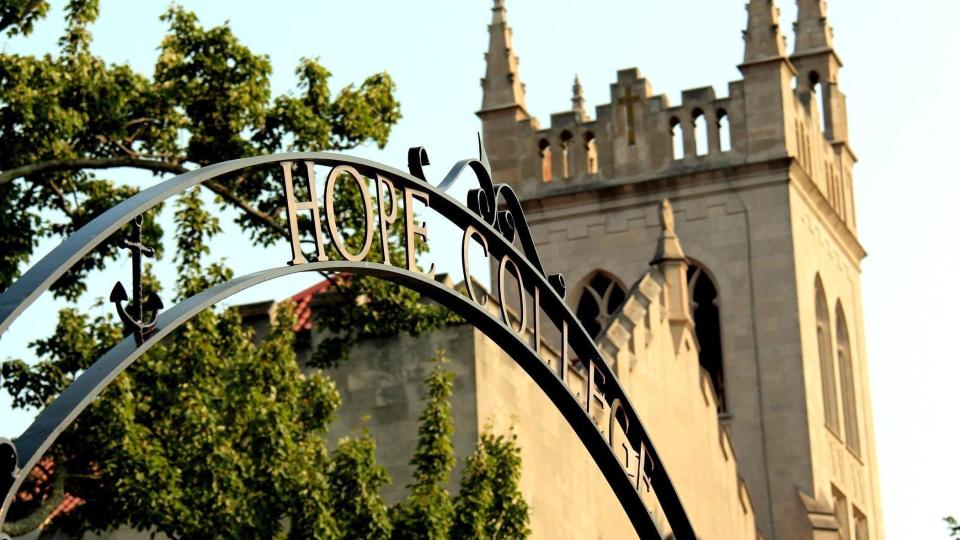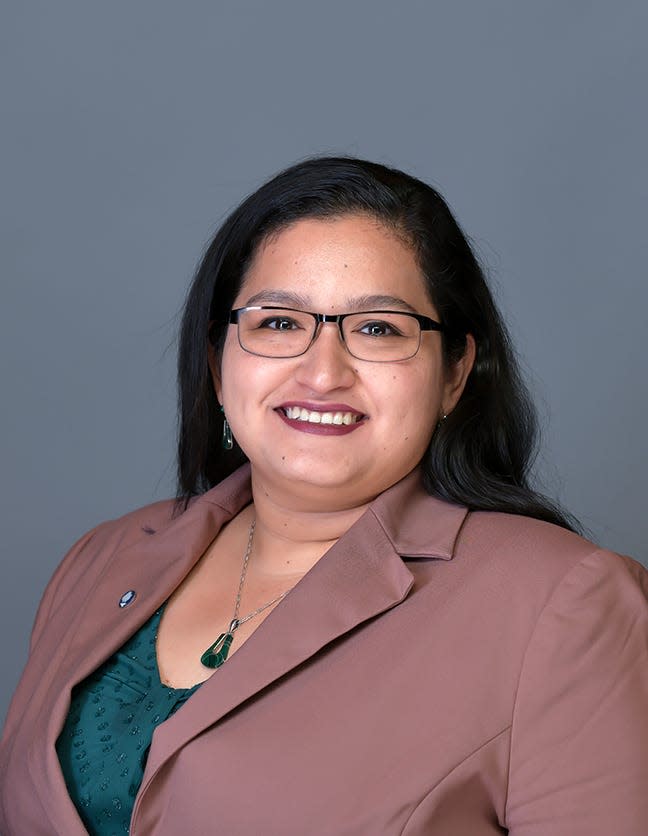The global bird population is dropping. Hope College professors got a grant to find out why
HOLLAND — A pair of professors at Hope College have received more than half a million dollars to study a decline in bird populations.
Hope professors Kelly Ronald and Natalia Gonzalez-Pech will use a three-year grant for more than $500,000 from the National Science Foundation to better understand a decline in bird populations. According to a 2019 study published by “Science,” that population has dropped by an estimated 3 billion since the 1970s.

Ronald and Gonzalez-Pech will use the grant for an interdisciplinary study of how house sparrows are affected by iron oxide nanoparticles (IONPS), a type of air pollution. The particles are floating bits of iron generated by iron and steel industries that are so small, a standard microscope cannot see them.
Ronald is a professor of biology who came to Hope in 2019 and has been studying the impact of human activity on birds for several years. Gonzalez-Pech, who also joined Hope in 2019, is an assistant professor of chemistry whose research focuses on nanoparticles.
The study has three objectives related to IONPs — to test the prediction that exposure decreases hearing sensitivity; to test the prediction that exposure alters species-relevant behaviors such as foraging and anti-predator response; and to localize and quantify the accumulation of IONPs in relevant organs.


“The overarching hypothesis is IONPs exposure will disrupt the (birds’) behavior by either detrimentally affecting auditory sensory processing and/or through bioaccumulation of nanoparticles,” the professors note in their project summary.
Ronald and Gonzalez-Pech see IONPs as a “piece of a larger puzzle” in terms of the drop in bird population. Other factors may include other forms of air pollution, pesticides and habitat loss.
They believe establishing IONPs as negatively affecting house sparrows could have implications for everything that breathes air, noting that IONPs have been found in the brain tissue of people in heavy industrial areas like London and Mexico City.
More: Faculty member Heidi Kraus appointed associate provost at Hope College
More: Hope College sees potential expansion as 'gateway' between campus, downtown
Subscribe: Receive unlimited access to your local news coverage.
The grant, which begins in September, is part of a new NSF initiative called “Building Research Capacity for New Faculty in Biology.” There were around 20 awards nationwide as part of the program. Jennifer Blake-Mahmud, an assistant professor of biology who joined Hope last fall, also received a grant starting in January.
Blake-Mahmud will study how gene expression relates to the gender of plants whose sex is determined by the enviornment.
Ronald and Gonzalez-Pech began their research more than a year ago. Funding support has come from the Michigan Space Grant Consortium and Hope College’s Nyenhuis Collaborative Grant program.
Several Hope students have also assisted in the research — junior Jacob Bergstrom; sophomore Peyton Hallemann; senior Lindsay Jankowski, 2022 graduate Molly McLinden; junior Andrew Reiffer; and junior Olivia Sprys-Tellner.
This article originally appeared on The Holland Sentinel: Hope College professors to study declining bird population with grant

